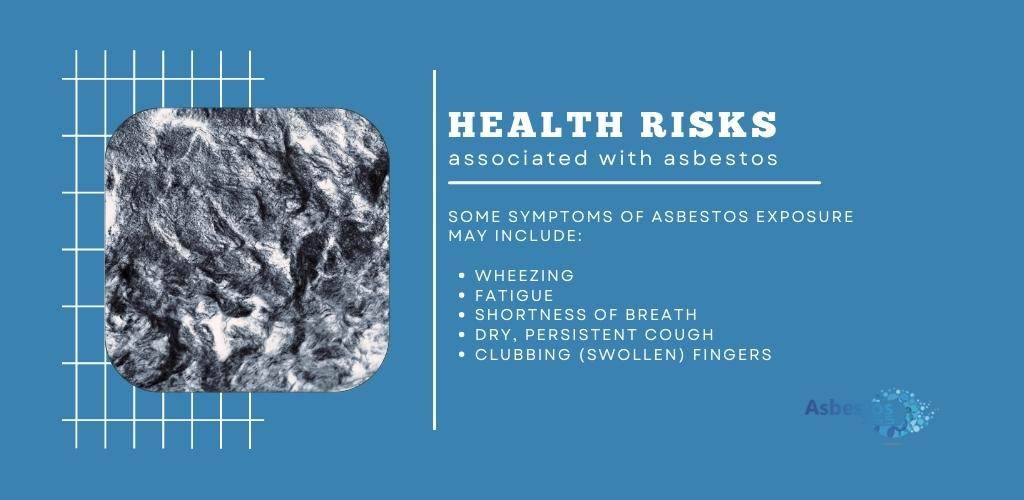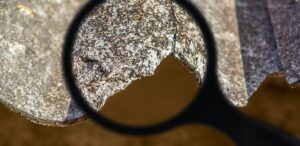How to Recognise Asbestos
How to identify asbestos, a question I am often asked. Although asbestos may typically be found in older buildings and in areas like floor coverings and chimneys, it is a toxin that can be difficult to identify on your own, especially just by visual analysis.
So how can you identify asbestos and what can be done about it? In this guide, we will help you understand what asbestos is, how you can identify it, and what the necessary steps are in eradicating it from your surroundings.

What is Asbestos?
Asbestos is a fibrous silicate mineral, often consisting of six types of which are all declared to be carcinogenic. As they are heat and chemical resistant, asbestos was commonly used in the construction industry until the late 1990s, for insulating buildings, used in flooring and roofing, and even used as a spray on walls and ceilings.
However, it was only in the 1970s when it started to become widely associated with health risks. As a result, many industries stopped using it in manufacturing and construction, but when was the use of asbestos finally banned?
The answer to that question is 1999 – but it is estimated that around 50% of homes in the UK may still contain asbestos, particularly for those built before 1999. If your home was constructed after 1999, you are probably safe to assume that there is no asbestos within your home. However, houses and buildings built pre-1999 may carry asbestos, so it’s worth knowing how to identify asbestos.
Health risks associated with asbestos


Asbestos can become a dangerous problem when any buildings or structures with it are damaged or disturbed – this is when asbestos fibres may be released into the environment, and you may end up breathing this in. It’s important to know the early symptoms of asbestos exposure so then you can take the actions required to seek medical help.
Some symptoms of asbestos exposure may include:
- Wheezing
- Fatigue
- Shortness of breath
- Dry, persistent cough
- Clubbing (swollen) fingers
Although conditions may actually take years before appearing, it would still be wise to consult with your GP if you believe you are experiencing asbestos-related symptoms. You may particularly be at risk if you or someone you live with used to be a construction worker decades ago when asbestos was still in use.
How do you identify asbestos?
Types of asbestos materials typically found in homes include:
- Amosite (brown)
- Crocidolite (blue)
- Chrysotile (white)
Whilst it may seem simple enough, their associated colours do not make identifying asbestos any easier. Asbestos fibres are tiny and it’s usually not physically possible to see them with the human eye. Likewise, you are also unable to identify it by smell unlike other harmful substances, truly making it a hidden killer.
The only way to identify asbestos is by arranging an asbestos survey. An asbestos survey is carried out by someone who is specialised in identifying asbestos. These asbestos experts gather information about the building, as well as take samples to be tested, to help them determine whether asbestos-containing materials (ACM) are present within the building or structure. You can expect them to have a good look around the building, searching for areas that may potentially be ACM.
There are typically two types of asbestos surveys:
- Management Survey – for non-domestic buildings such as offices and schools, enabling these establishments to be compliant with asbestos regulations, monitoring the condition of materials and identifying any ACM.
- Refurbishment and Demolition Survey – required before construction or refurbishment can take place and is generally a more intrusive survey, identifying ACMs that could be disturbed during construction work.
An asbestos survey is a legal requirement for any non-residential property, so if you’re the building owner or landlord, you may be responsible for managing asbestos within that property. Failure to do so may result in imprisonment and/or a fine of up to £20,000; thus, it’s crucial that you are aware of asbestos within your property.
What to do if you suspect asbestos within your home
If you suspect asbestos within your home, do not attempt to tear down anything as this may only have an adverse effect, releasing more asbestos into the air. You can find out more asbestos surveys in Hertfordshire for your home with us at Asbestos 365.
We offer asbestos surveying for both domestic and commercial properties done by a qualified surveyor, so you can rest assured that we will be able to identify any ACM that is present in your home. If we do find any, trust us to recommend the next steps in what you can do in managing, maintaining, or removing the ACM.
Do not hesitate to contact us if you have any enquiries or for more information.









